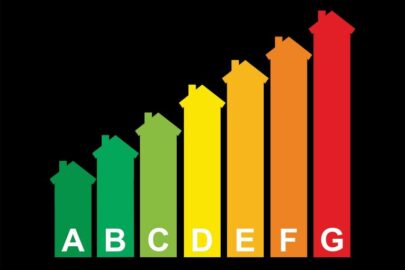So-called ‘Green mortgages’ appear to be growing in number each week as lenders attempt to offer products that reward borrowers for an improvement in the EPC ratings of their properties.
At present, this has tended to be led by the buy-to-let fraternity, and it’s fair to say that the lettings sector is ahead of homeowners in this regard given the fact that all lettable properties require an EPC rating of E or above to house tenants, but this is changing to C or above from 2025.
However, one must expect that the direction of travel will be the same for owner-occupation and this presents lenders with an issue particularly in terms of their back book. At the moment, it’s understandable why these type of ‘Green rewards’ products are predominantly focused on new customers – the idea being to ring-fence everything new coming onto the book and then look at the properties that were previously lent on.
And yet it’s going to need to be tackled at some stage. We as surveyors are already being asked to advise both lenders and homeowners on the energy efficiency of properties and what can be done to deliver a net zero carbon output. That requirement will only be heightened and it clearly makes sense to start this sooner rather than later.
However, trying to do so now within a ‘mini-boom’ is incredibly difficult. Indeed, the market may feel like it’s in something of a stasis situation and that has a considerable amount to do with the sheer level of current demand versus supply.
Certainly, we are nowhere near a position currently where a prospective buyer looks negatively upon a property which has, for example, a very poor EPC rating. Indeed, you might argue that when it comes to purchasing, the EPC tends to be at best, considered but not deemed a deal breaker, and at worst, completely ignored.
Now, this isn’t in any way to suggest that the EPC isn’t relevant because, in my view, it clearly is, and buyers should undoubtedly be considering poor ratings particularly, what this is going to mean for their energy usage and bills, and what they may have to do in order to get that rating up. No-one wants to be paying thousands upon thousands in energy bills when there are options to be more efficient.
The problem though is that, with stock levels as they are, the EPC is not making a difference either way to the price paid and the considerations that should be made. Hence, conversely while there is no impact on the price of those with poor EPC ratings, neither is there an uplift for those with top-range EPCs.
However, that will not always be the case. It will change for a number of reasons. Firstly, because ever greater pressure (and measures) will be brought to bear on the energy ratings of the UK properties which demand an improvement. The Government, after all, has to meet its own carbon emission targets and this country’s property industry will be required to do their bit to support this.
And secondly, while it is already important to many people, as a different generation of homebuyers come to market, that importance will grow. I’m not suggesting that existing homeowners are somehow negligent when it come to green concerns or climate change, etc, but it seems true that younger people/generations are much more engaged/interested in the topic, they have an opinion, they have a willingness to take action, and they don’t want to have a negative impact themselves.
That will bring a growing ‘energy efficiency’ creep into the marketplace, and those green price premiums will start to evolve and show themselves. In other words, if you are selling a property with an awful EPC rating – and let’s bear in mind that the minimum requirements are going to keep rising in this regard – then you’re going to be hit in the pocket in terms of how much your valuation is, and what you’ll be able to achieve as a price.
So, while the real progress might not come this year, the industry is going to have to get its head around how it tackles the efficiencies required, what it means for consumers and the property they sell/buy, and very interestingly, how lenders approach the millions of properties they already lend on and how they can secure the energy improvements that the government will undoubtedly demand. It’s definitely an area to watch and an area where product growth seems assured.
Simon Jackson is managing director at SDL Surveying
